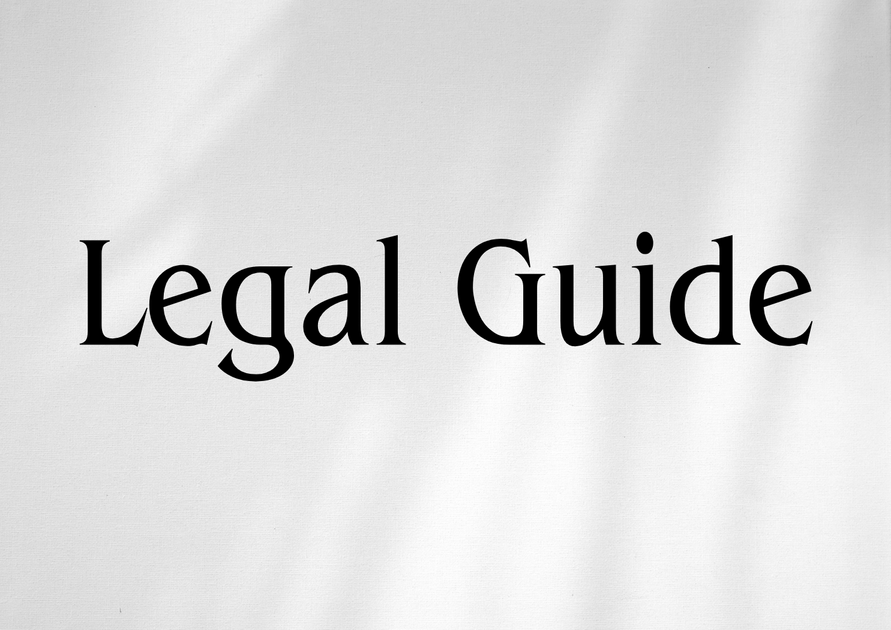Introduction
The rapid expansion of the Middle East aviation sector has positioned Saudi Arabia as a compelling environment for airlines and investors seeking new market opportunities. Among the numerous requirements for launching commercial air transport operations in Saudi Arabia stands one pillar of regulatory compliance: the Air Operator Certificate (AOC). An AOC is a mandatory authorization issued by the General Authority of Civil Aviation (GACA) permitting an entity to conduct specified commercial air transport operations. Securing an AOC is an extensive legal endeavor, involving a sequence of procedural and regulatory steps, in-depth documentation, and ongoing compliance obligations.
For businesses, executives, and legal professionals in the UAE, understanding the Saudi AOC process is crucial—not only for direct market participants, but also for UAE-based lessors, joint venture partners, and service providers navigating cross-border aviation projects in 2025 and beyond. Recent legislative developments in both Saudi Arabia and the UAE, including updates to the UAE Federal Aviation Law and enhanced GACA pathways, continue to reshape compliance expectations and operational risk. This article offers an expert, consultancy-grade analysis of the Saudi AOC legal landscape, with practical insights and comparisons relevant to UAE stakeholders.
Table of Contents
- Legal Framework in Saudi Arabia and UAE
- What is an Air Operator Certificate? Legal Significance
- GACA AOC Requirements and Stages
- Detailed Breakdown of the Regulatory Process
- Consultancy Insights for UAE-Based Operators and Investors
- Comparing Old and New Aviation Regulations
- Case Studies and Practical Scenarios
- Legal Risks of Non-Compliance and Mitigation Strategies
- Compliance Checklists and Process Flow Suggestions
- Conclusion and Future Insights
Legal Framework in Saudi Arabia and UAE
Key Regulatory Authorities
In Saudi Arabia, the control and issuance of AOCs falls under the remit of the General Authority of Civil Aviation (GACA), empowered by Civil Aviation Law (Royal Decree No. M/44, issued 1426H [2005]) and its subsequent Executive Regulations. In the UAE, aviation regulation is anchored in Federal Law No. 20 of 1991 on the Regulation of Civil Aviation, most recently updated by Cabinet Resolution No. 16 of 2021 and governed operationally by the UAE General Civil Aviation Authority (GCAA).
These legislative frameworks, while distinct, are both modeled on ICAO (International Civil Aviation Organization) standards and place safety, security, financial fitness, and public interest at the forefront of authorization procedures. For UAE parties expanding into Saudi Arabia, knowledge of both sets of requirements is vital.
Recent Legal Updates Impacting UAE Stakeholders
Modernization efforts in Saudi Arabia, embodied in Vision 2030, saw GACA introducing streamlined AOC processes and stronger enforcement of ICAO Annex 6, while the UAE updated several federal laws to reflect global best practices in airworthiness, personnel licensing, and foreign operator privileges (see UAE Ministry of Justice). As of 2025, digital risk management, cybersecurity, and cross-border data sharing have become embedded compliance priorities influencing how legal consultants advise on AOC applications.
What is an Air Operator Certificate? Legal Significance
Understanding the AOC
An Air Operator Certificate is a legal document issued by GACA certifying that the operator has the professional capability and systems required to ensure the safety of its operations. The AOC specifies the authorized aircraft types, approved areas of operation, and types of operations (e.g., passenger, cargo, charter). It is an indispensable condition precedent to acquiring the requisite Operating License and for contracting with international lessors, insurers, and aviation authorities. The legal significance is profound: operating without an AOC exposes entities to severe administrative and criminal penalties, aircraft grounding, and potential blacklisting from international airspace.
Legal Precedents and Regulatory Basis
The Civil Aviation Law of Saudi Arabia specifies under Article 38 that “no person shall conduct commercial air transport unless in possession of a valid Air Operator Certificate.” In the UAE, similar language appears under Article 39 of Federal Law No. 20/1991. These articles empower regulators to suspend or revoke AOCs for breaches, with recent enforcement actions highlighting the consequences for operators failing to meet post-certification obligations.
GACA AOC Requirements and Stages
The Five-Phase AOC Certification Process
GACA’s AOC procedure is structured in five distinct phases, each requiring legal, technical, and operational diligence:
- Pre-Application Phase: Initial engagement; GACA details requirements and expectations.
- Formal Application: Submission of the full application form and comprehensive documentation.
- Document Evaluation: GACA reviews manuals, policies, procedures, and compliance structures.
- Demonstration & Inspection: The applicant must demonstrate operational capability and undergo safety audits.
- Certification: Issuance of AOC, subject to ongoing oversight.
Mandatory Documentation and Key Legal Submissions
Successful navigation of these phases necessitates rigorous compliance with documentary and procedural requirements, including:
- Incorporation documents, shareholding structure, and corporate governance policies.
- Operations manual (conforming to GACAR Part 121/135).
- Safety management system (SMS) documentation (ICAO Annex 19 compliance).
- Financial viability assessments and insurance certificates.
- Maintenance program details, approved maintenance organizations (AMOs) listings.
- Personnel licensing (pilots, maintenance engineers, managers), background checks, and training certificates.
Detailed Breakdown of the Regulatory Process
Phase 1: Pre-Application Consultation
Initial consultations with GACA are critical; legal representatives should ensure clients understand the legal framework, disclose foreign ownership, and clarify intent (scheduled or non-scheduled operations). Early evaluation of eligibility under GACA and any potential cross-border ownership restrictions (notably applicable for UAE investors) is essential at this stage.
Phase 2: Submission of Application
The formal application demands:
- Detailed business plan outlining corporate objectives, route networks, and risk management strategies.
- Comprehensive suite of manuals (flight operations, ground handling, emergency procedures).
- Legal proof of aircraft acquisition (purchase agreements, leases), supported by conformity assessments.
All documentation must be presented in Arabic or with certified translations; common issues at this stage include insufficient documentary evidence and discrepancies in legal identity.
Phase 3: In-Depth Document Evaluation
GACA’s evaluation is thorough, examining both legal compliance and operational readiness. Common legal pitfalls involve inadequate safety management system documentation, incomplete insurance coverage as per GACAR Part 205, or non-alignment with Saudi labor regulations concerning aircrew and ground staff.
Phase 4: Demonstration and Audit
Operators must provide live demonstrations or simulations of proposed operations. Legal advisors must ensure that flight and ground crew records, maintenance logs, and regulatory approvals are up-to-date and available for review. This phase also involves security vetting under Saudi Anti-Terrorism Regulations for designated personnel.
Phase 5: Certification and Post-Issuance Obligations
Upon successful inspection, the AOC is issued, usually with operational specifications (OpSpecs) attached. Ongoing legal obligations include regular safety audits, prompt incident reporting, periodical staff recertification, and proactive management of any changes in corporate structure or operations (mandatory notification to GACA within set periods).
Consultancy Insights for UAE-Based Operators and Investors
Ownership Structures, Joint Ventures, and Strategic Bidding
UAE investors and operators must be vigilant regarding Saudi Arabia’s foreign ownership and control regulations set by GACA and the Ministry of Investment. While Vision 2030 has relaxed several restrictions, the majority ownership and effective control must remain with Saudi nationals or approved entities, unless exempted by specific cabinet resolutions. Navigating joint ventures requires robust shareholder agreements, compliance with anti-fronting regulations, and proactive management of licensing risks.
Cross-Border Legal Harmonization
Advisors should undertake full mapping of differences between UAE and Saudi requirements concerning aircraft registration, crew licensing standards (notably GCAA vs. GACA licensing protocols), and operational licensure. Ensuring that group structures are not in breach of Saudi anti-concealment laws is fundamental to avoiding criminal liability and business disruption. Companies often benefit from appointing local legal counsel in both jurisdictions for parallel process management.
UAE Outbound Operators Seeking Fifth Freedom Rights
UAE-based airlines seeking to operate flights touching third countries from Saudi airports must negotiate Fifth Freedom traffic rights. These are typically governed by bilateral air services agreements and require supplementary approvals beyond the core AOC process. Legal strategy here involves careful analysis of the applicable bilaterals and close engagement with both GCAA and GACA during the application phase.
Comparing Old and New Aviation Regulations
Recent regulatory shifts have changed both the process and documentation for AOC issuance. To clarify, the table below compares key differences between preceding regulations and current frameworks in Saudi Arabia, with reference to UAE standards for context.
| Aspect | Saudi Arabia – Pre-Vision 2030 | Saudi Arabia – 2024/2025 | UAE – 2025 |
|---|---|---|---|
| Foreign Ownership | Strict limit (max. 49%) | Increased flexibility; Cabinet exceptions | Case-by-case under GCAA |
| Personnel Licensing | National licenses only | Recognition of select foreign qualifications | ICAO-based, cross-recognition |
| Safety Management Systems (SMS) | Minimal, manual reports | ICAO Annex 19 digital compliance required | Digital SMS mandatory |
| Application Language | Arabic only | Arabic mandatory; English summaries | English or Arabic |
| Inspection Regime | Annual, scheduled | Randomized, risk-based audits | Hybrid risk-based |
| Post-AOC Reporting | Annual reports | Quarterly/digital, incident-driven | Quarterly/incident-driven |
Insert Visual: Penalty Comparison Chart – Graphical summary of key penalties in case of non-compliance, with UAE and Saudi benchmarks for guidance.
Case Studies and Practical Scenarios
1. Hypothetical: UAE Aviation Lessor Expanding into Saudi Arabia
A UAE-based aircraft leasing firm plans to establish a subsidiary in Riyadh, targeting both dry and wet/leasing operations. The Saudi AOC process requires local Saudi control, navigating investment licensing, and the appointment of a Saudi-resident accountable manager. Failure to comply resulted in the temporary suspension of several lessors in 2022 due to GACA-identified control irregularities.
2. Case Study: Cross-Border Crew Licensing Dilemma
A UAE airline operating charter flights sought to have its Emirati-licensed pilots recognized in Saudi Arabia, but only partial equivalency was granted under GACA regulations. Only pilots meeting GACAR Part 61 prerequisites were cleared, necessitating further training. Legal consultants successfully secured partial approval by submitting a dual-compliance pilot training syllabus mapped to both GACA and GCAA standards.
3. Example: Non-Compliance Penalty Enforcement
In 2023, a Saudi operator operating beyond its specified OpSpecs lost its AOC and incurred substantial fines—underlining the importance of strict adherence to all certification conditions and timely updating of operational authorizations.
Legal Risks of Non-Compliance and Mitigation Strategies
Major Legal Risks
- AOC Suspension or Revocation: Caused by operational non-compliance, unreported corporate changes, or safety failures.
- Financial Sanctions: GACA may fine operators SAR 100,000+ for serious breaches; in the UAE, GCAA imposes comparable penalties under Federal Law No. 20/1991 as amended.
- Reputational Damage and Market Exclusion: Persistent breaches may result in blacklisting from codeshare or international alliance agreements.
- Personal Liability: Accountable managers and directors may face personal sanctions under Saudi anti-fraud and concealment statutes.
Compliance Strategies
- Engage experienced aviation legal counsel early in the AOC process to pre-empt regulatory ambiguities.
- Appoint a dedicated compliance officer to monitor legal, technical, and corporate reporting obligations.
- Adopt digital compliance tools for real-time tracking of safety events, pilot licensing, and document validity periods.
- Maintain ongoing dialogue with both GACA and GCAA when operating on a cross-border basis to ensure harmonized reporting and audit trails.
Compliance Checklists and Process Flow Suggestions
To support successful certifications, the following checklists and process maps are recommended:
Saudi AOC Legal Compliance Checklist
- Corporate incorporation certificate and articles
- Proof of majority Saudi ownership/control (unless exempt)
- Detailed operations manual and SMS certification
- Aircraft documentation (ownership, airworthiness, insurance)
- Pilot and crew licenses vetted to GACA Part 61 standard
- Maintenance contracts with GACA-approved AMOs
- Clear evidence of financial fitness and solvent banking history
- Comprehensive risk management policy
- Digital archiving of all reports and incident logs as per current law
Insert Visual: Process Flow Diagram – Step-by-step depiction of the AOC certification journey, including critical legal milestones (application, inspection, post-issue monitoring).
Conclusion and Future Insights
The pathway to securing an Air Operator Certificate in Saudi Arabia is complex, highly regulated, and periodically updated. As the region’s aviation ecosystem matures, legal alignment between Saudi Arabia and the UAE will only increase. For UAE investors, airlines, lessors, and legal professionals, understanding these requirements—down to documentary, compliance, and operational detail—is indispensable for competitive and compliant market entry.
Looking ahead, the integration of digital compliance architectures, further liberalization of ownership restrictions, and the adoption of next-generation safety and environmental standards will drive both opportunity and complexity. Proactive legal strategy, regular cross-jurisdictional liaison, and dynamic compliance management will enable businesses to thrive within the framework of both GACA and UAE law in 2025 and beyond. Engaging experienced legal counsel is an imperative, not a luxury, for organizations navigating these dual legal regimes.
- Best Practice: Appoint a cross-functional task force including legal, compliance, technical, and commercial leadership for any new market entry or AOC renewal.
- Stay Updated: Monitor GACA, GCAA, and Ministry of Justice updates; subscribe to official gazettes for new decrees affecting aviation operations.
- Mitigate Risk: Leverage digital compliance platforms and external audits for independent assurance of legal adherence.
For in-depth advice, customized compliance support, or representation before GACA and UAE authorities, our legal consultancy team is equipped to guide you at every stage.




